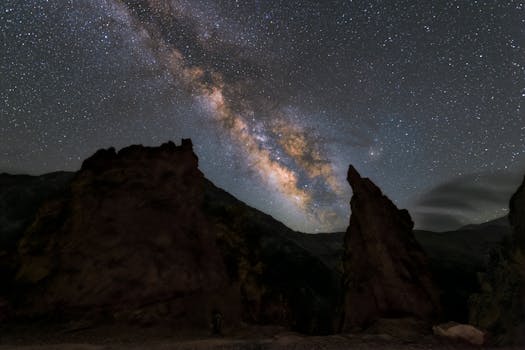
“
Beyond the Milky Way: Imagining New Worlds and Possibilities
Introduction to Space Exploration
Beyond the Milky Way: Imagining New Worlds and Possibilities has been a topic of interest for centuries, with humans always seeking to explore and understand the vastness of space. The Milky Way, our home galaxy, is just one of billions of galaxies in the observable universe, each containing millions of stars, planets, and other celestial bodies. As we continue to advance in technology and space exploration, we are able to study and learn more about the universe, its origins, and the potential for life beyond Earth. For a deeper dive into the imaginative aspects of space, check out Soaring Through the Cosmos: The Power of Imagination Beyond the Stars.
Understanding the Universe
The universe is estimated to be around 13.8 billion years old, with the Milky Way galaxy forming approximately 13.6 billion years ago. The universe is still expanding, with galaxies moving away from each other at an incredible speed. The cosmic microwave background radiation, a leftover from the Big Bang, is the oldest light in the universe, dating back to the dawn of time. By studying the universe, we can gain insights into its evolution, the formation of galaxies, and the potential for life on other planets. This exploration is akin to Galaxies of Dreams: How Imagination Transcends the Night Sky, where creativity and science intersect.
Exploring New Worlds
With the help of telescopes and space missions, we have been able to discover thousands of exoplanets, some of which are believed to be located in the habitable zones of their respective stars. The habitable zone, also known as the Goldilocks zone, is the region around a star where temperatures are just right for liquid water to exist, making it a potential candidate for supporting life. Missions like the Kepler space telescope and the Transiting Exoplanet Survey Satellite (TESS) have been instrumental in discovering new exoplanets and studying their properties. For more on this topic, explore Cosmic Creativity: How Imagination Soars Beyond the Constellations.
Takeaways
- The universe is vast and complex, with billions of galaxies, each containing millions of stars and planets.
- The potential for life beyond Earth is an exciting area of research, with scientists studying the conditions necessary for life to exist on other planets.
- Space exploration and the study of the universe can provide insights into the origins and evolution of our cosmos.
- Continued advances in technology and space exploration will allow us to learn more about the universe and its many mysteries.






